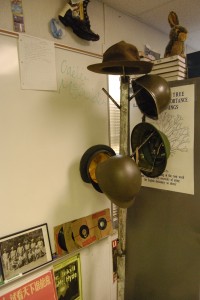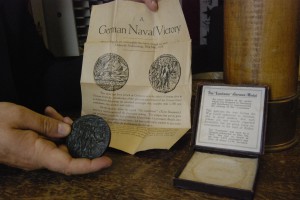Common Core Questions
August 24, 2011Posted in General Interest | Comments Off
Thank you for your participation in Common Core training and for submitting questions. For answers to some of the county’s most commonly asked questions, please check out Race to the Top Coordinator Tom Feller’s blog post: http://successforeverychild.wordpress.com/2011/08/23/ccssnces-question-answer-updated-82311/
Here are answers to some of your questions:
What are crosswalk and unpacking documents?
The crosswalk documents show the intersection between the new standards and the existing NCSCOS. They provide a brief commentary for most of the standards. The unpacking documents show the connections between College and Career Readiness Standards and each discipline-specific Common Core or Essential Standard. These documents also provide commentary on scaffolding, strategy and assessment.
You might also encounter the phrase, “unpacking standards,†or something like it. This phrase seems to suggest the process of interpreting what each standard means, what essential questions, content, objectives, assessments, and resources might be contained within that standard.
Several PLCs asked variations of a question about the focus on “core†subjects: English, social studies, math, and science. Here is my best effort at a response.
In some ways, non-core disciplines are one step ahead of the core areas. CTE has already moved most of its courses to Revised Blooms (RBT), and essential standards appear to have been adopted and are available in a massive document available online. Foreign languages have adopted an assessment tool in the Lingua Portfolio that aligns well to essential standards thinking. The DPI website links to adopted standards for almost every area, including foreign language, health, and even guidance. EC is definitely incomplete. Sorry JROTC: I didn’t see anything for you yet. Check out: http://www.dpi.state.nc.us/acre/standards/new-standards/#worldlang.
Assuming we handle training properly, all disciplines should have adequate opportunity to interpret the standards that relate to the subjects they teach. The technology and language arts standards will apply in every discipline, as technology and reading/writing skills are necessary in almost every major and career our children might choose.
Will the websites be accessible?
Yes. And you should be able to access the documents immediately. If you cannot, please ask me for help. We will figure it out.
How will this change improve learning?
I will respond optimistically here, as I do believe these new standards have tremendous potential. The standards I reviewed give teachers and school systems the flexibility to determine how best to ensure that students develop the skills and knowledge they need. Whereas the old standards in subjects like civics and econ and biology required such extensive memorization of terms and facts, the new standards focus more on conceptual understanding in such a manner that knowledge works in support of the concepts. I believe the essential standards allow for a greater depth of study, a more reasonable and meaningful base of factual knowledge, and an increased school/teacher/student flexibility (i.e. if Rob Miller wants to go loco with dung beetles, he can, as long as it helps his students acquire the essential standards).
What are the trainings going to be like, regarding structure, etc.?
I cannot say for certain, as it has not yet been decided by the RttT team. Some of the training will require group sessions to disseminate information and strategy, but I will push for and make every effort to incorporate substantial time dedicated to PLC work, where teachers of a common course or area of study (Algebra I, Healthful Living) can develop their curriculum, assessments, pacing and resources together. In my mind, Â teacher- and PLC-centered training sessions will be essential to the success of this SCOS transition.
Will we get lessons/templates to aid in transition and planning?
“Yes. We are being told that sample plans will be developed at the State level. Additionally, there are many sample plans already available through resources such as the Common Core website. Teachers in PCS will also be developing and sharing sample plans as the year goes on.†(Tom Feller, http://successforeverychild.wordpress.com)
Several people asked about provision of resources and technology…
At this point, no money has been guaranteed for purchase of new text books. I am not certain how this lack of resources will hinder us, though the state is developing resources in every content area. Regarding technology, we probably need to understand that using technology does not mean that you necessarily use a Smart Board instead of a chalk board, or that all of your quizzes are done on CPS. Incorporating technology might mean that students conduct research online, present their learning through web tools like prezi or glogster, participate in an online forum, use educational apps on iPod Touches, or build rockets out of soda bottles. Technology isn’t going to be an every-room-equal deal, but we will need to identify our technology needs—the ones that will enhance student learning—and dedicate a portion of our 411 money to filling those needs.
Sorry I couldn’t answer everyone’s question. We shall learn more as we go, and by the time we hit August 2012, we will all be experts, I’m sure.



